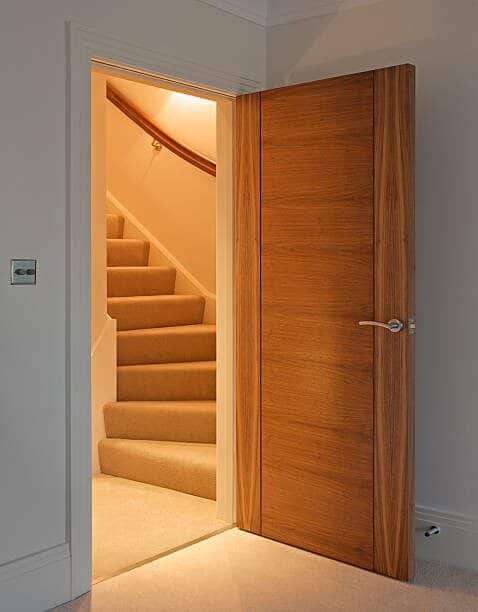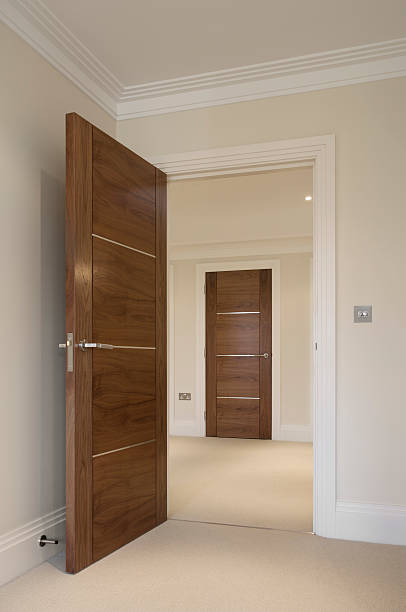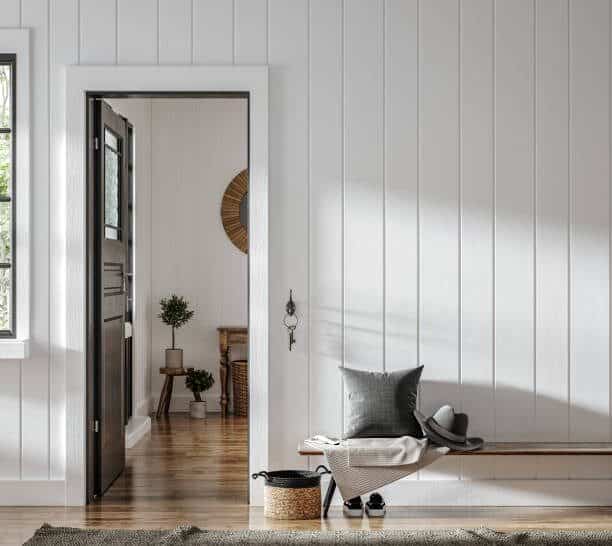Door stop on door or baseboard, a seemingly simple option, are crucial to home design’s complicated tapestry of appearance and practicality. Imagine your house as a painting with each piece carefully picked to convey comfort, elegance, and originality.
A simple but crucial brushstroke, the door stop affects not only the practicalities of your living spaces but also the visual story of your sanctuary.
Doors, usually just gateways between rooms, become dynamic in this story. The choice between mounting a door stop on the door or gracefully on the baseboard is a delicate balance between form and function, elegance and substance.
This option goes beyond practicalities to reveal your design philosophy. This blog centers on your home’s doors, which are sometimes ignored.
We equip you with insights and considerations to make an informed selection that meets your home’s practical demands and enriches its distinctive character. As we begin our investigation, let’s enter a world where choices are more than practicalities—they represent your home’s character.
Table of Contents
Understanding door stops
Door-mounted stops
Door-mounted stops quietly solve a typical domestic problem in the delicate dance of home operation. Preventing doors from swinging too wide and protecting walls and furniture is no easy task. These stops are dedicated to their purpose and are physically attached to the door.
Their clever hinge-like system smoothly restricts the door’s mobility. As the door opens, the door stop softly stops its movement at the right place.
This subtle yet efficient preventative device keeps the door within its limits and protects your home’s structural integrity. They blend effortlessly with the door’s design, providing a symphony of form and function. These stops integrate with the architecture and remain discreet.
Stops on baseboards
Baseboard-mounted stops are bolder, strategically placed on the wall or baseboard behind the door. Like door mounted equivalents, they protect doors from inflicting inadvertent damage. These stops provide visibility to their operation in this conspicuous option.
The commonplace becomes exceptional here. Baseboard frames become artistic outlets as well as utilitarian necessity. The wide variety of shapes and materials makes them beautiful pieces that may be customized for your interior design.
From elegant metals to rustic wood, these stops become more than simply door guards; they contribute to your home’s visual story.
What to consider for door stop on door or baseboard
Aesthetics
Door stops are more than functional—they express your design philosophy. The look of this apparently little feature might affect your home’s atmosphere.
If you like clean lines and simplistic design, the door-mounted stop is perfect. Its discreet design blends with the door to provide a seamless look. For those with a more intricate flair, the baseboard framed stop is a great canvas. With a variety of styles and materials, it becomes a beautiful object that gives character and individuality to your space.
Door type
Understanding that each door in your home has a personality is crucial to finding the right door stop. These stops fit swinging and sliding doors.
For many situations, their versatility makes them ideal. The baseboard-mounted stop takes the stage for two-way doors. In rooms with multi-direction doors, it provides excellent control when strategically placed on the wall or baseboard. Doors of larger weight and construction may benefit from door frame stops.
Installation
The DIY enthusiast prioritizes installation simplicity. Door frame stops, with their ease of use, dominate this sector. They are ideal for homeowners who want a quick and easy installation. They connect easily to the door, simplifying installation.
Installing baseboard stops requires extra care. Measurements and alignment must be precise to ensure an attractive appearance and excellent operation. Choose the end result and the level of hands-on installation involvement.
Functionality
Door-mounted and baseboard-mounted stops both prevent doors from being damaged, although their functions differ. These stops provide for finer control over the door’s motion due to their direct attachment.
This increased control is useful in settings where the opening distance must be precisely controlled. Consider your desired control level and if the door stop meets the needs of each door in your home. Beyond aesthetics, it’s about adapting functionality to your living space’s demands, so your decision looks nice and works well in daily usage.

Decision making
Whether you choose door stop on door or baseboard, it will determine how your living space fits together. This crossroads presents various important factors that will influence your home’s final choice.
Individual aesthetics
Your aesthetic preference drives this decision-making. Consider the home’s design motif. The door-mounted stop may match your minimalist, seamless area. Its subtle presence complements minimalist design, ensuring that every item unites your room.
However, the baseboard stop is appealing if your design is more expressive and intricate. This essential item becomes a beautiful piece that adds personality to your house.
Door traits
Your home has doors of various sizes, uses, and materials. Being aware of their differences is key to choosing wisely. For doors with a simple swing, the door framed stop provides regulated functioning without taking center stage. The baseboard-mounted stop shines in places with two-way doors. Its smart wall or baseboard positioning offers multi-directional control. The weight and substance of your doors may also affect the stability of a door framed stop.
Installation choice
Your DIY hobby might strongly affect your choice. The door framed stop is ideal for quick and easy installation. It’s simple door installation makes it ideal for quick solutions. For precise and thorough alignment, the baseboard stop encourages a more complicated installation method. The outcome is a bespoke solution that fits your environment, but it takes more work.
Aimable function
Choose based on the required functionality. Directly attached to the door, door-mounted stops allow for finer door motion control.
Spaces where you want to regulate door openings are ideal for this control. Consider how your living environment meets your everyday requirements and how much control you have. Although serving the same purpose, the baseboard-mounted stop may differ. It goes beyond practicality to enhance your home’s aesthetics.
Your choices and the necessities of your living space determine whether you choose a door stop or baseboard in house design.
As you choose, imagine how form and function fit together to tell your home’s story. Let the door framed stop’s understated elegance or the baseboard stop’s expressive flair show how you’ve thoughtfully curated your living space to reflect your style and improve your everyday life.

Exploring the aesthetics
Door stops become part of your home’s visual narrative as you explore styles. With its simple form, a door-mounted stop adds a clean, modern look. It quietly adds refinement to modern and minimalist settings.
With its discreet presence, the door stop maintains visual flow in your living area. Its seamless integration with the door’s construction makes it suitable for simplicity and beauty. Baseboard-mounted stops, on the other hand, become art.
Like your imagination, this world has endless potential. The door stop on the door or baseboard has become beautiful features that enhance your home’s appearance with different patterns, materials, and finishes.
Imagine a baseboard-mounted industrial metal stop bringing a modern touch to your home. Choose a wooden stop for warmth and heritage. Curating the baseboard stop makes it deliberate and expressive, giving character and individuality to your house.
Door type analysis
Finding the correct door stop requires an understanding of door types. Door-mounted stops are versatile and fit single and double doors. As door stop chameleons, they provide regulated functionality without compromising door appearance.
Their versatility makes them a good alternative for houses with varied door styles. When doors swing both ways, baseboard-mounted stops are highlighted.
They command doors with multidirectional swings from their wall or baseboard positioning. Doorways that need to go in several directions make this important.
Consider your doors’ weight and material while choosing a door stop. These stops can help heavier doors stay put. Thus, the decision-making process entails a thorough investigation of your door types to ensure that your stop performs its primary function and blends effortlessly with their different features.
Conquering installation door stop on door or baseboard
Door mounted stops
The installation procedure might greatly affect the doorstops you choose. User-friendly door-mounted stops are easy to install.
They are ideal for do-it-yourselfers and anyone seeking quick and effective solutions since they can be fastened straight to the door. Due to the simple installation method, homeowners may modify their living spaces quickly and simply. For simple, productive installation, door framed stops are a good solution.
Baseboard-mounted stops
Installing baseboard stops requires extra caution. Due to its nature, this procedure requires accuracy. Precision measurements and alignment provide excellent performance and aesthetics. The installation may take longer than normal, but the outcome is a stunning, custom solution.
The baseboard stop turns from a utilitarian need into a unique decorative feature that adds character to your home. This installation becomes a creative process, allowing homeowners to build a solution that serves its purpose and enhances their living space.
Unpacking function
The decision of choosing door stop on door or baseboard are based on functionality, so understanding the details is crucial. Read more
Door-mounted stops
Door framed stops give more control over the door’s mobility due to their direct attachment. This control is useful in places where the door opening distance must be limited.
The simple mechanism provides utility without sacrificing elegance. These stops, like quiet guardians, mix form and function. Those who want precise door control and a clean, minimalist look should choose them.
Stops on baseboards
Baseboard-mounted stops provide the same purpose but may provide less door motion control. They compensate by allowing creative expression.
These stops let homeowners experiment with designs and materials, turning a practical piece into a beautiful feature. The stop becomes a canvas for personal design as well as a useful tool for your space.
Conclusion
The choice between door stop on door or baseboard is more important than you think in house design. Consider aesthetics, door kinds, installation techniques, and usefulness to make your decision practical and enhance your home’s visual appeal.
Whether you choose a door-mounted stop or a baseboard-mounted alternative, your choice helps your living space blend form and function.
It’s a purposeful step toward designing a house that satisfies your practical demands and represents your design tastes. Your pick of the door stop on the either door or baseboard, shows how carefully you’ve curated your living area, where each aspect contributes to its design.





